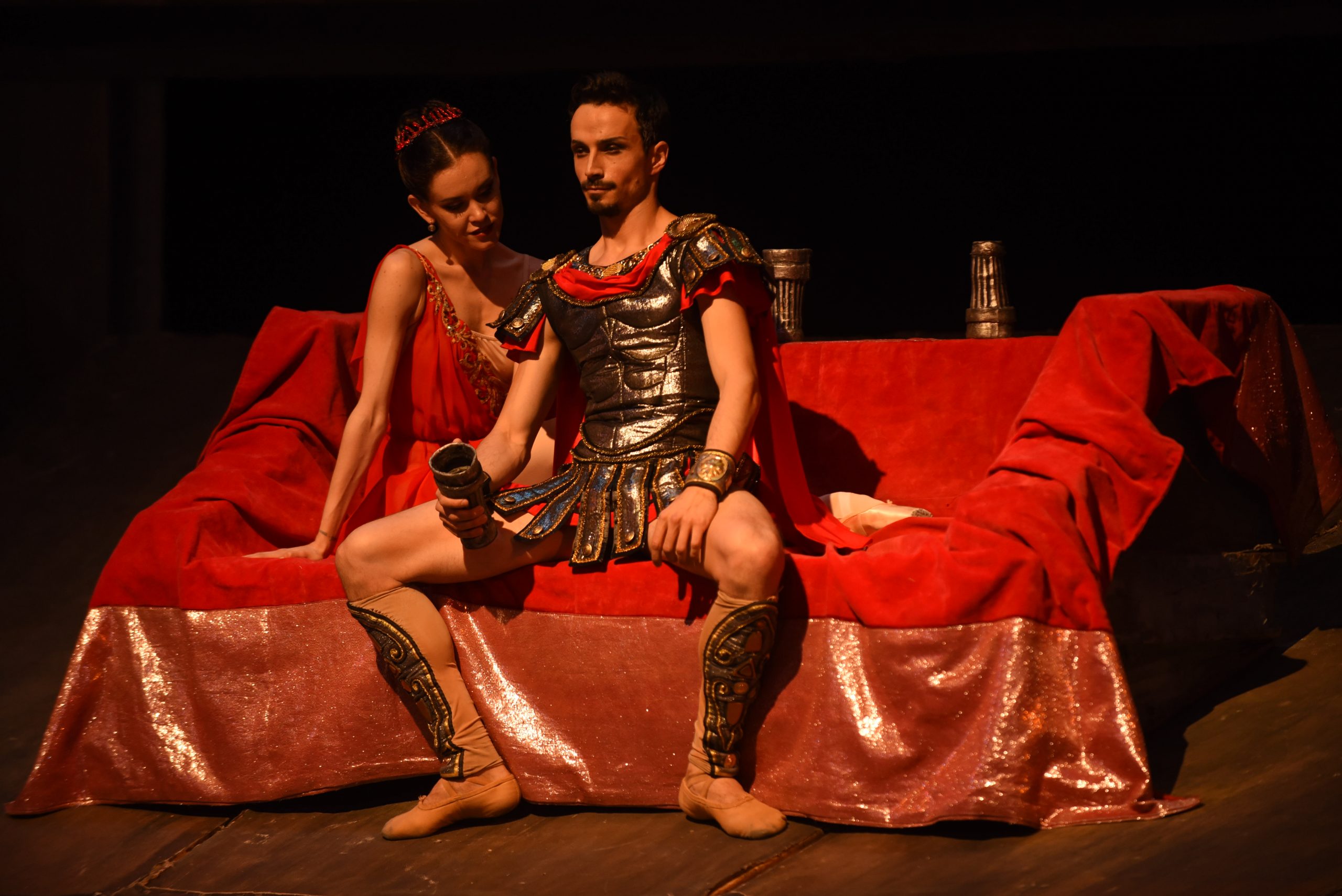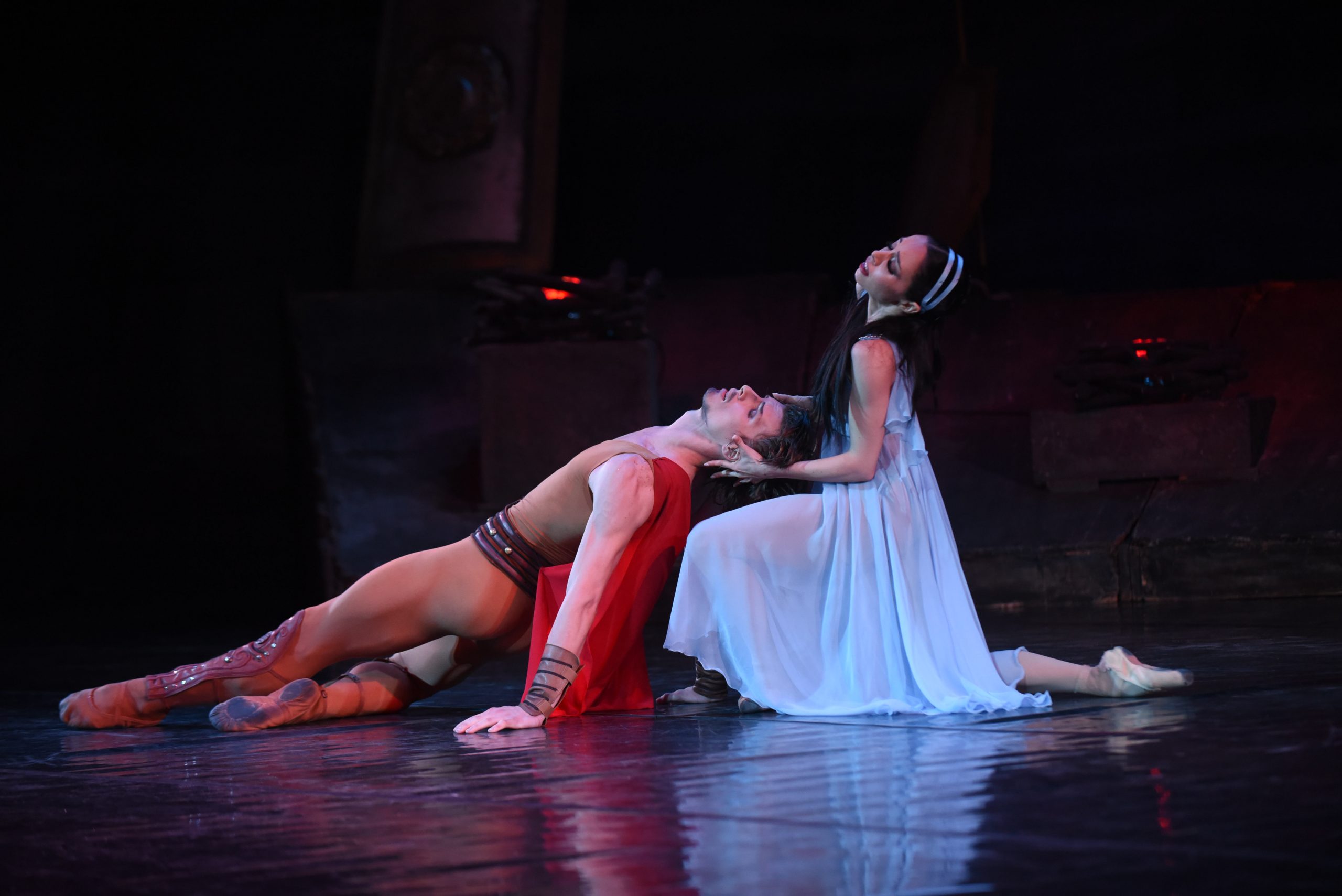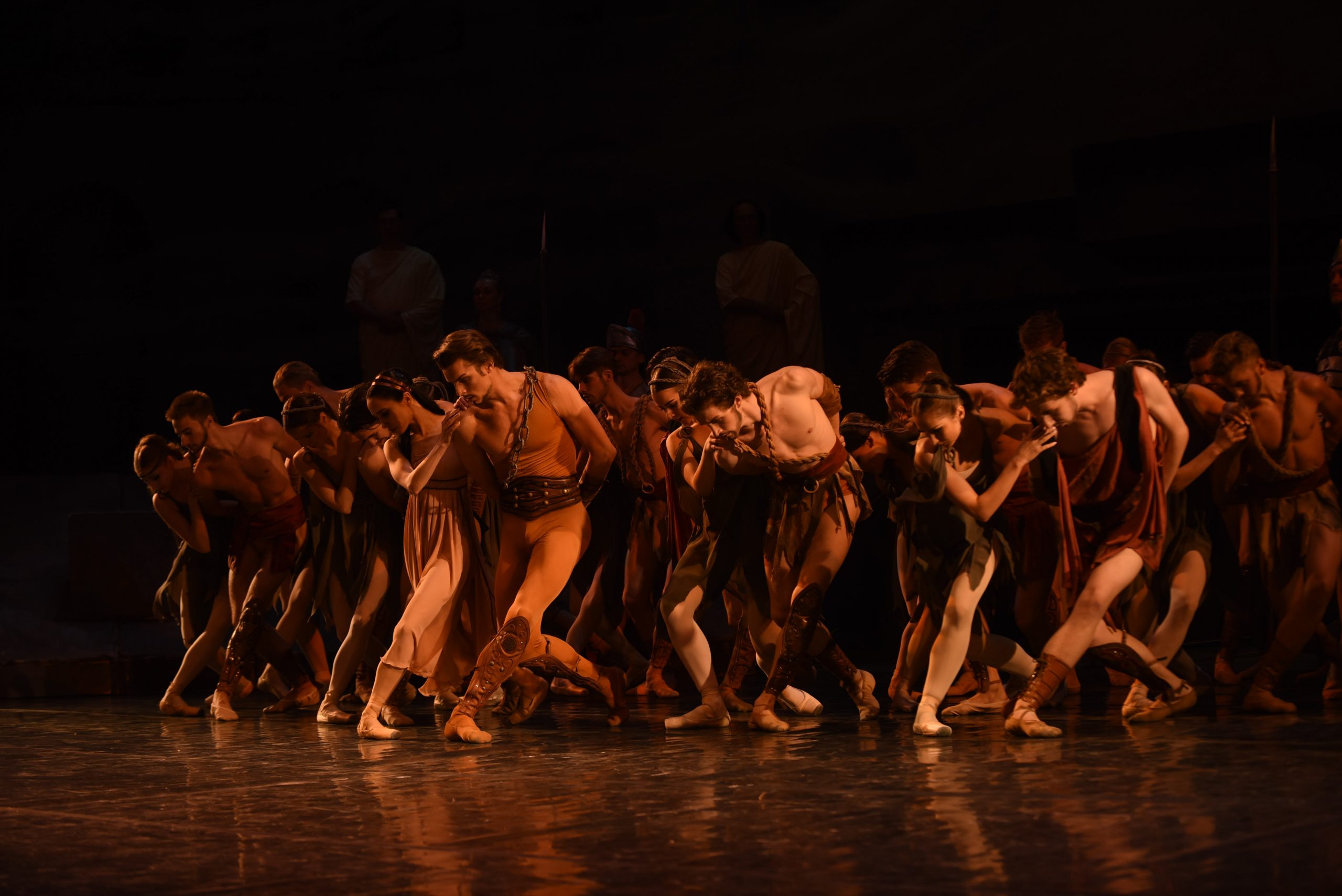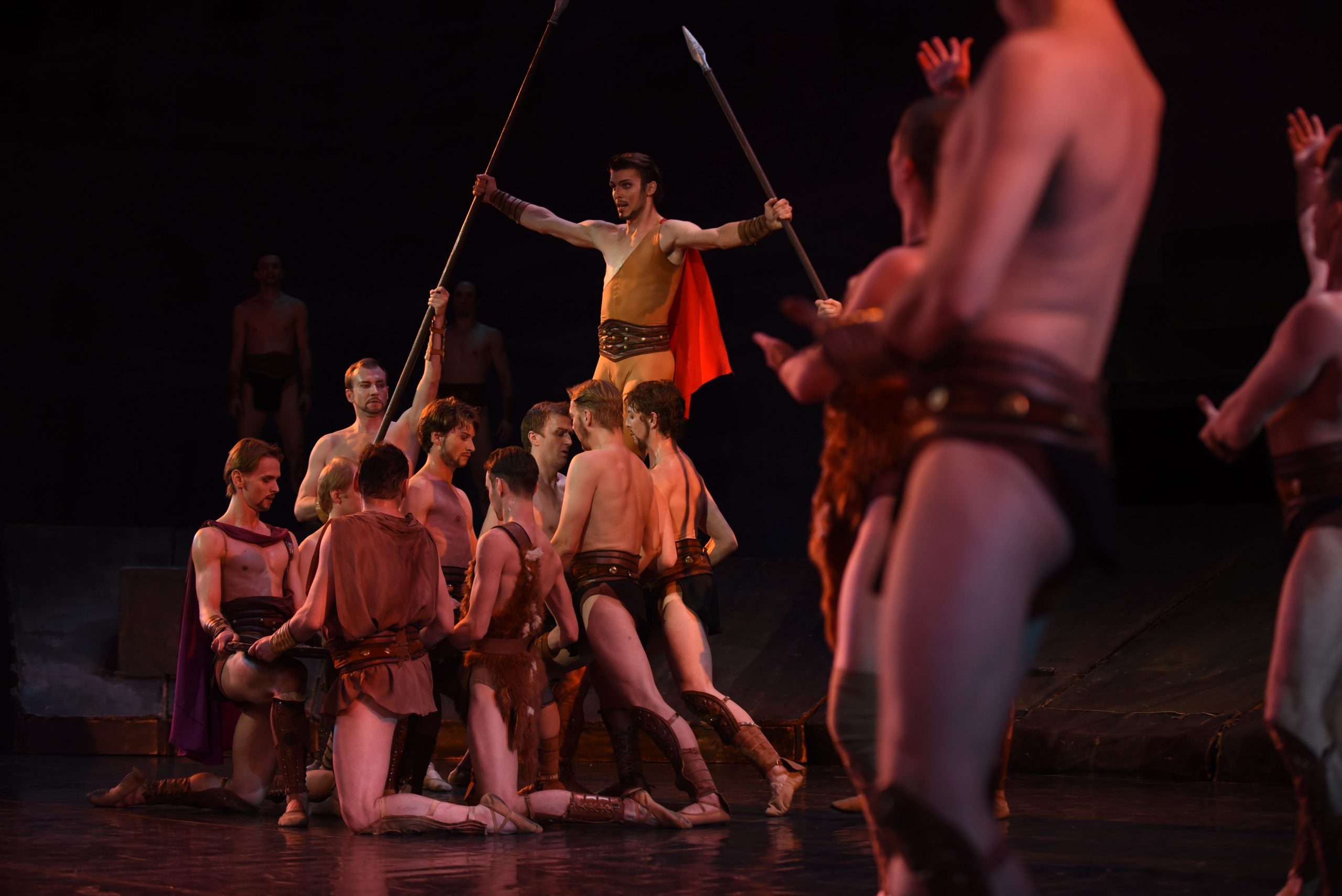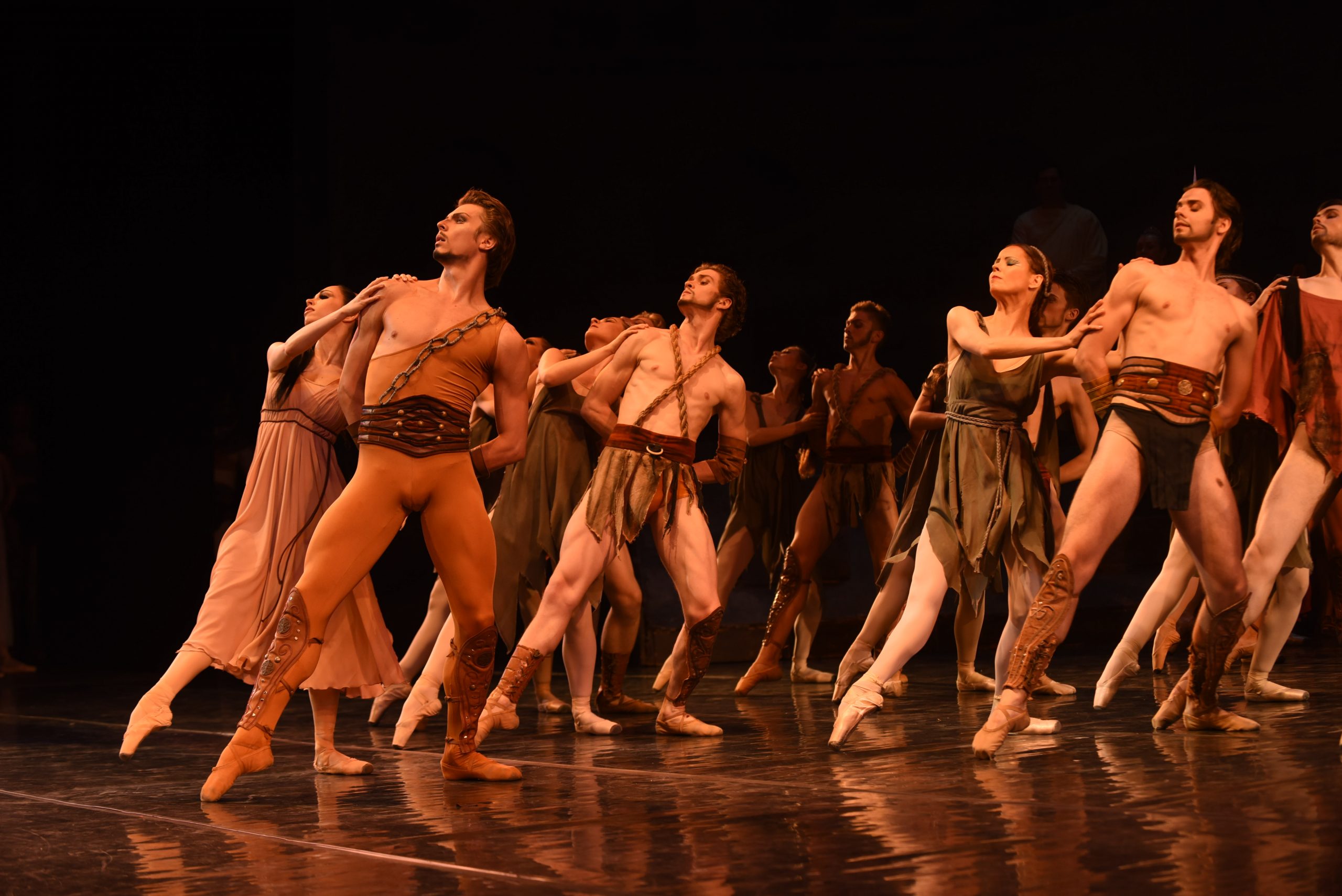Spartacus is a heroic male ballet which tells about social conflicts, freedom and independence.
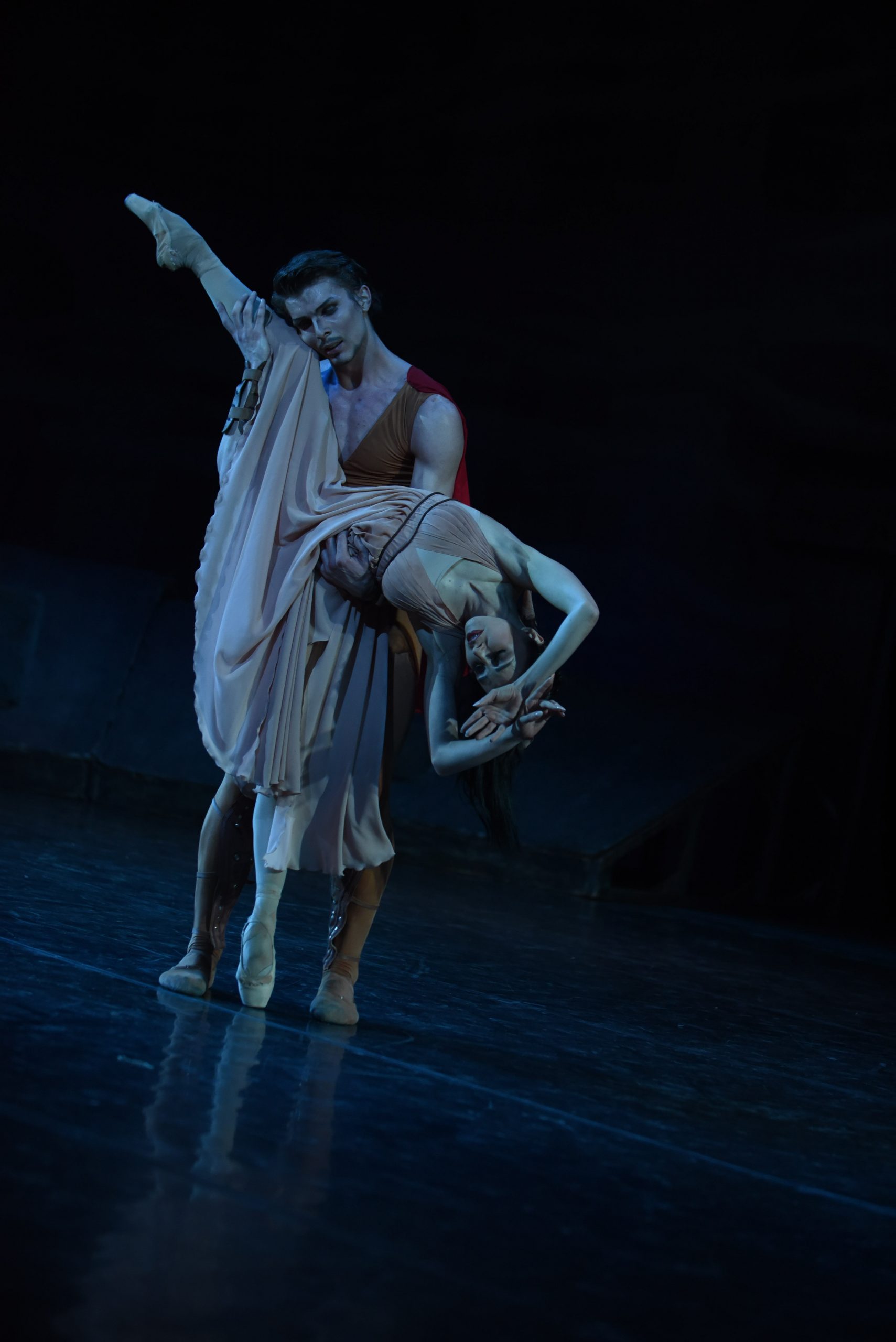
A large-scale, passionate ballet showing the times of the Roman Empire and the reign of Julius Caesar. Two main equal images in the ballet are the Roman patrician Crassus and the leader of the rebelling slaves — Spartacus. In the center of the performance lays a story of two couples, as two opposing forces — good and evil, slaves and masters, freedom and despotic power. We can witness the personification of the good of freedom in the couple of Spartacus and Phrygia. Power’s personification is in the couple of Crassus and Aegina.
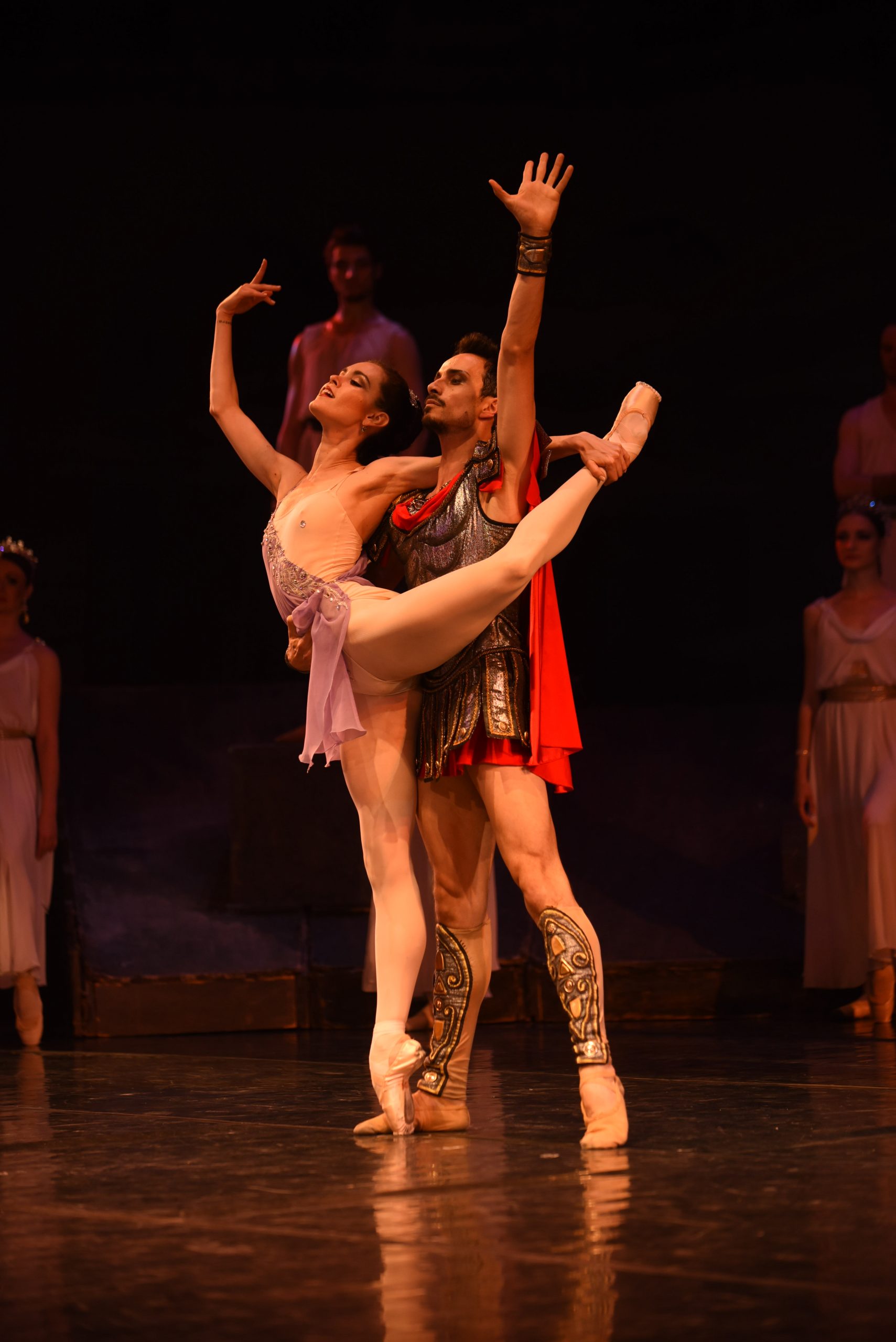
Kateryna Kukhar: «Spartacus is one of the greatest ballets, at the same time it is one of the most philosophical and tragic performances. When the curtain closes, Phrygia remains on the forestage, one on one with the viewer, she is sanctified by a ray of light and she seems to be asking: What for? Why? Phrygia is the beloved of Spartacus. Her part is very symbolic, based on the fact that she can feel the impending disaster. The whole image of Phrygia is built on broken lines, movements for scrapping. Her broken hands are shackled in chains, as if torturing her body, trying to break her soul. Breaking a person outwardly, they break her from the inside, break her will and thirst for freedom. But Spartak frees her from the shackles, he becomes a hope for her and for the entire enslaved people. Aegina is the exact opposite of Phrygia, sexy, vicious, prudent mistress of Crassus. She is ready to do anything for her commander. Thanks to the cunning of Aegina, Crassus manages to win the desired victory over Spartacus, but at the cost of his life. Therefore, the movements of Aegina, like a real temptress. Probably, it is important for a great man to have such a woman next to him.”
Oleksandr Stoianov: “Spartacus is the most masculine ballet of all performances in the world. In this ballet, two male characters, two leaders, are clearly expressed, but they are absolutely opposite to each other. The whole performance is based on contrasts. Image of Spartacus — face of justice and freedom, this hero goes to his goal in spite of any obstacles, even in spite of death. Crassus is the exact opposite of Spartacus. In the history of the Roman Empire, Crassus is a friend of Julius Caesar and the great Pompey, together they ruled Rome and the world. He is ambitious, cold-blooded, powerful and domineering ruler. His character is literally conveyed in every movement of the dance: high jumps, a raised hand when he commands. Crassus is a man who was not used to loosing, he was a smart and cruel ruler. For example, in order to suppress the uprising of Spartacus and restore morale to his army, he provided execution of every 10th warrior of his army who fled from the rebellious slaves. His cruelty had an effect — Crassus won the next battle with Spartacus.”
Script: Mykola Volkov
Choreography: Anatoliy Shekera
Music by: Aram Khachaturyan
